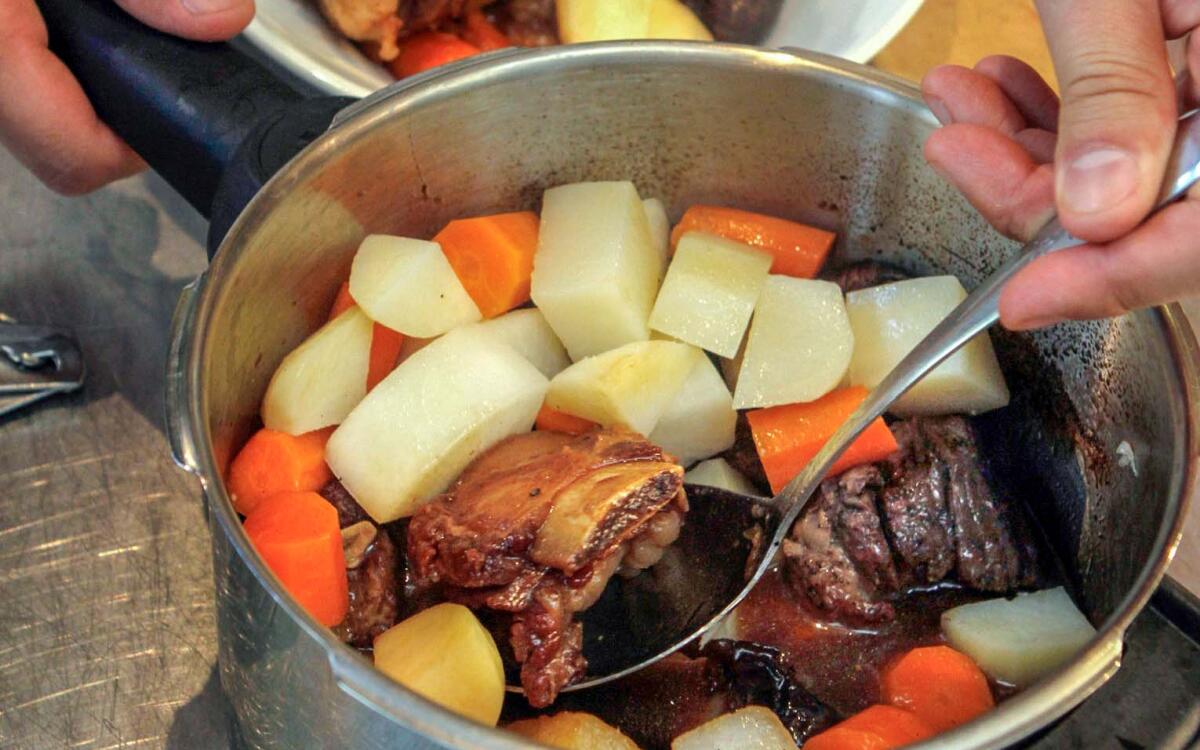Korean Galbi Jjim

- Share via
Meltingly tender beef and vegetables such as daikon radish, shiitake mushrooms, carrots and potatoes, are coated in a thick, salty-sweet, nutty sauce. The sealed environment of the pressure cooker doesn’t allow moisture to evaporate. Ingredients keep more of their native moisture allowing root vegetables like potatoes and carrots to taste more earthy and potato- and carrot-like. The extra-high temperature heightens the meat’s flavor.
Serve the ribs with steamed rice and radish kimchi.
Trim the short ribs of excess fat and cut between each bone. Make two vertical cuts in each piece of rib down to the bone. Season each piece of rib with one-eighth teaspoon salt, rubbing the salt on all sides of each rib to cover completely.
Heat a saute pan (preferably cast iron) over medium-high heat until hot. Add the canola oil and sear the ribs in a single layer until browned on all sides, 8 to 10 minutes (the ribs may need to be seared in batches). Drain the seared ribs on paper towels and set aside.
In a mixing bowl, combine the soy sauce, malted rice syrup, mirin, onion, grated daikon, pear and garlic.
In a 3 1/2-quart stove-top pressure cooker, combine the seared meat and soy mixture. Stir in the dried mushrooms and red dates. Cover and cook at high pressure (15 psi) for 1 hour. Start keeping time once it has come to full pressure, reducing the heat just to maintain pressure (but watch to make sure the cooker does not go below full pressure for the entire hour).
Manually release the pressure on the cooker, then open the top. The meat should be very tender when checked for doneness.
Taste the sauce and season again if desired; it should be sweet and savory. The volume of liquid should have increased after cooking for 1 hour. Gently stir in the daikon radish cubes, carrots and potato, along with the sesame oil and black pepper. Close the cooker and heat over high heat to bring the cooker back to full pressure (15 psi). Once the cooker has reached full pressure, remove from heat and allow the pressure to reduce naturally; do not release the pressure from the valve manually.
When the pressure is released, open the cooker. Check the vegetables; they should be tender. Cool slightly, then serve with a garnish of green onions and sesame seeds, along with a drizzle of additional sesame oil if desired.
Get our Cooking newsletter.
Your roundup of inspiring recipes and kitchen tricks.
You may occasionally receive promotional content from the Los Angeles Times.















